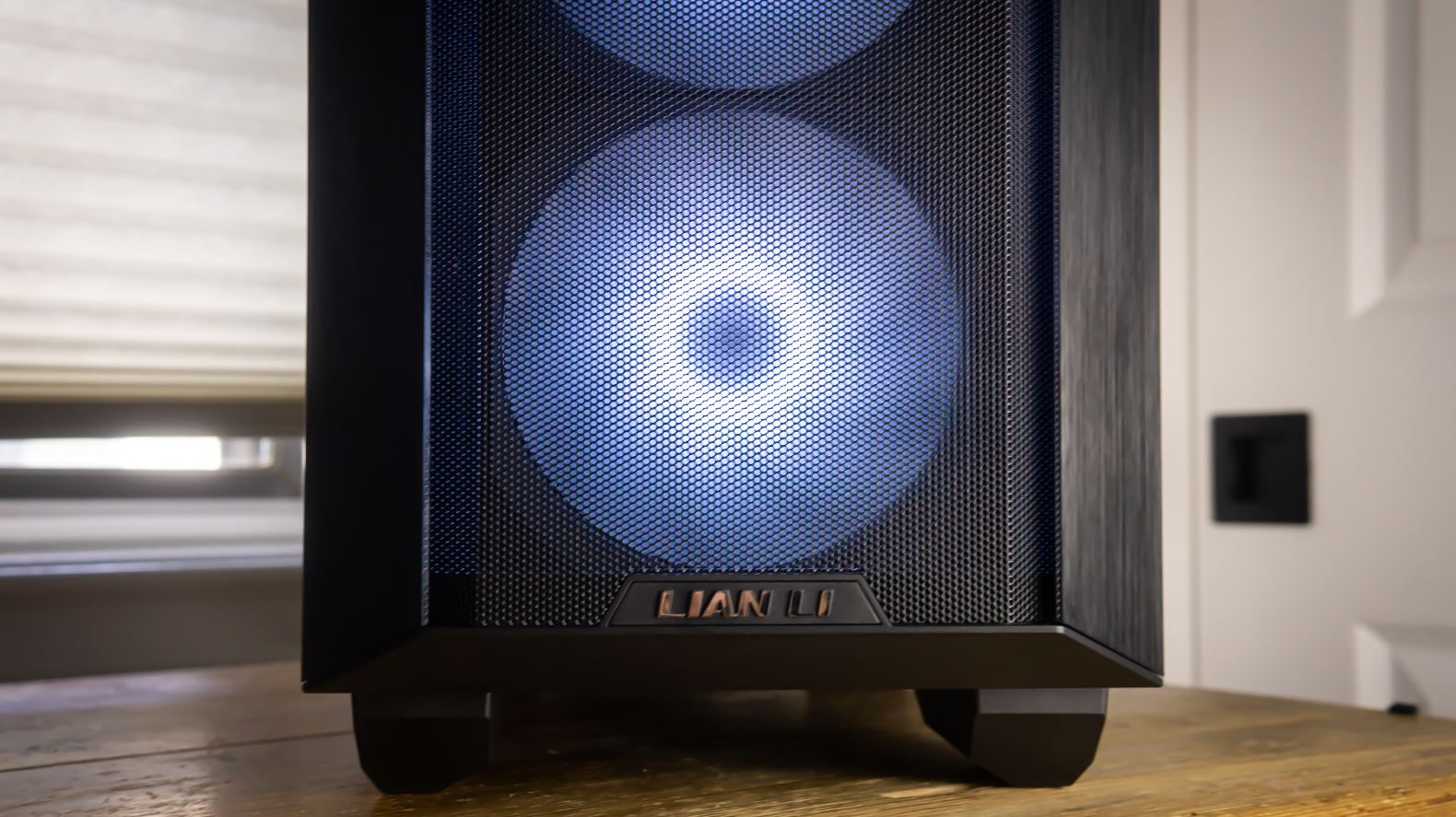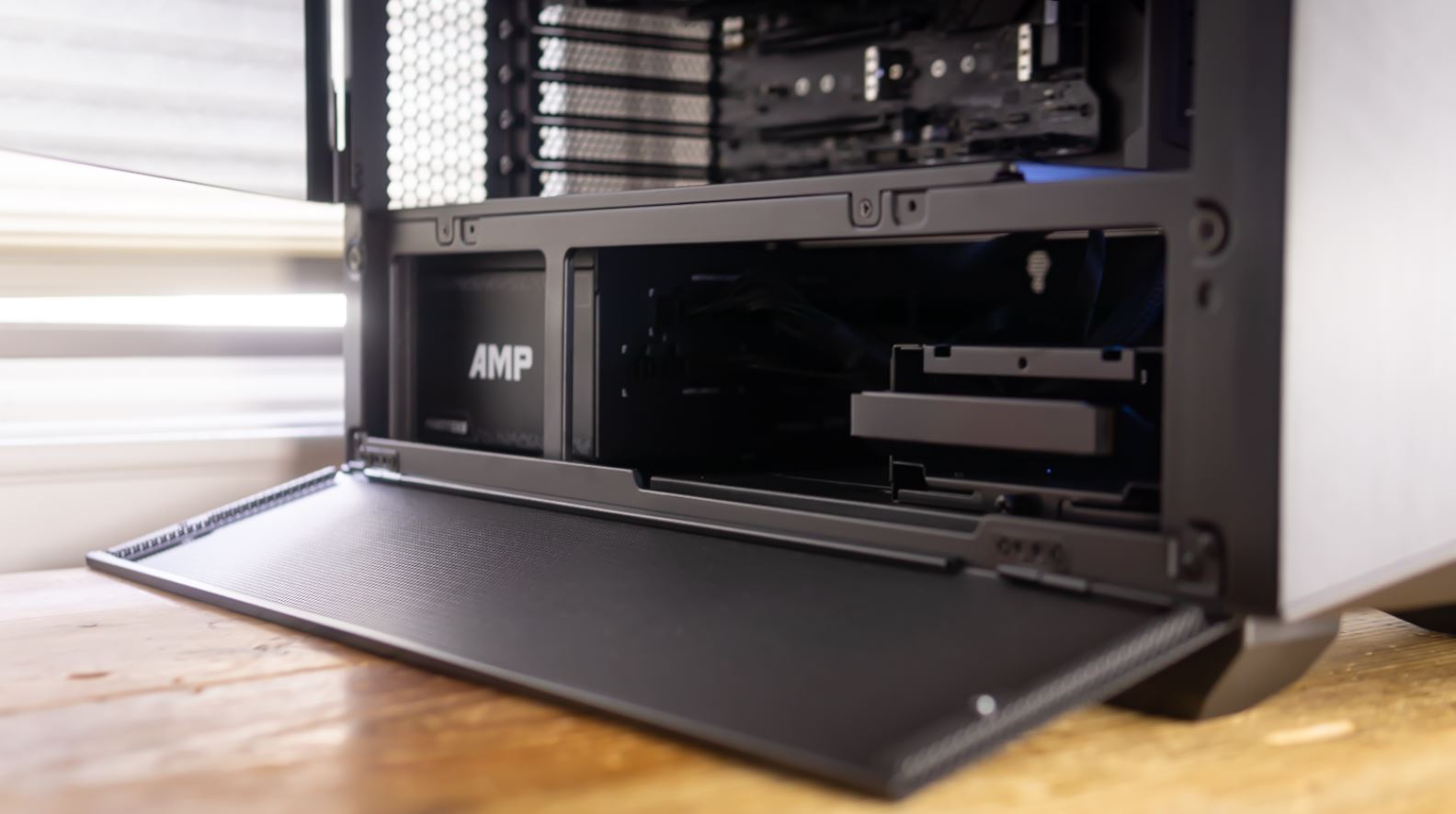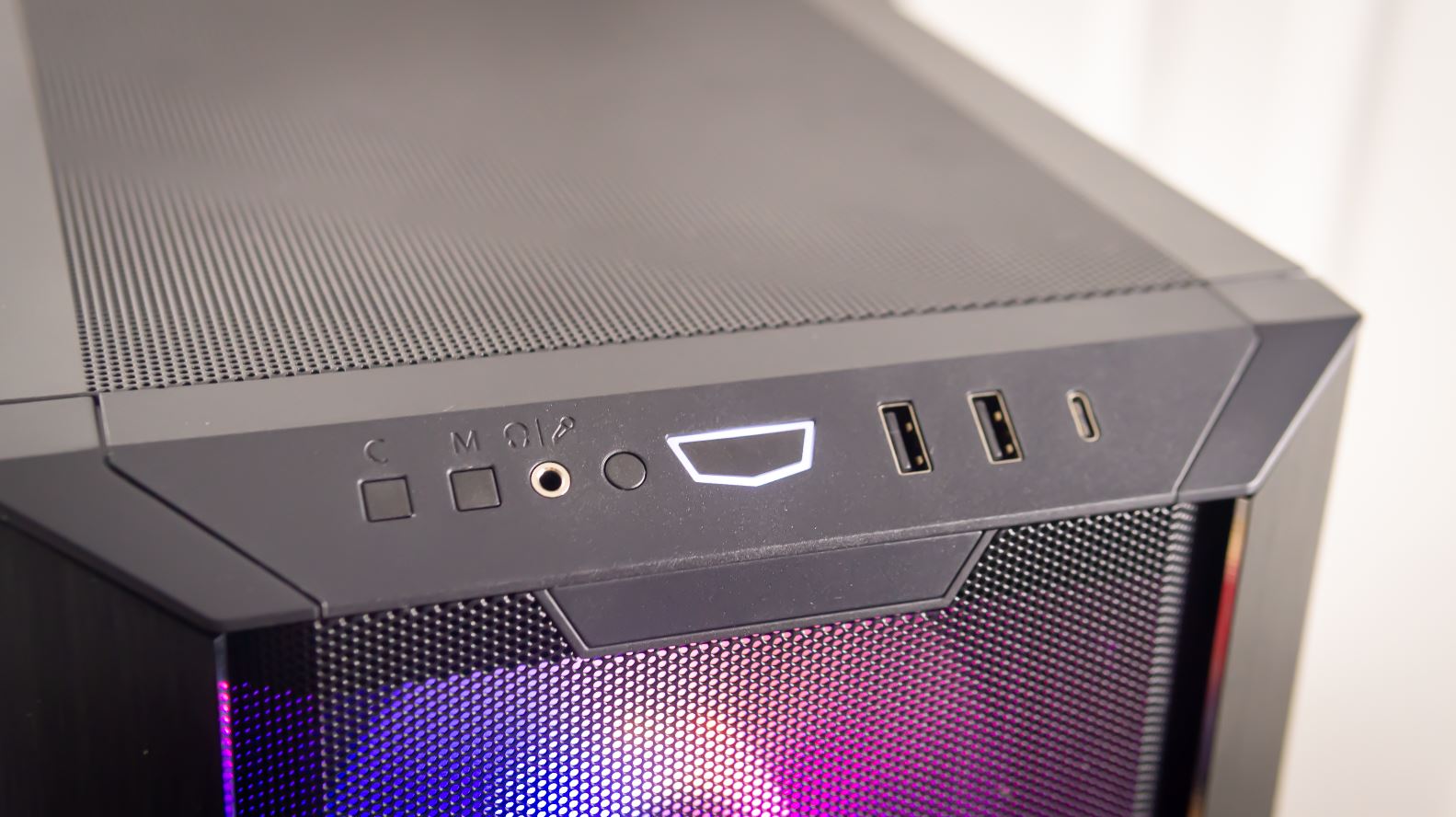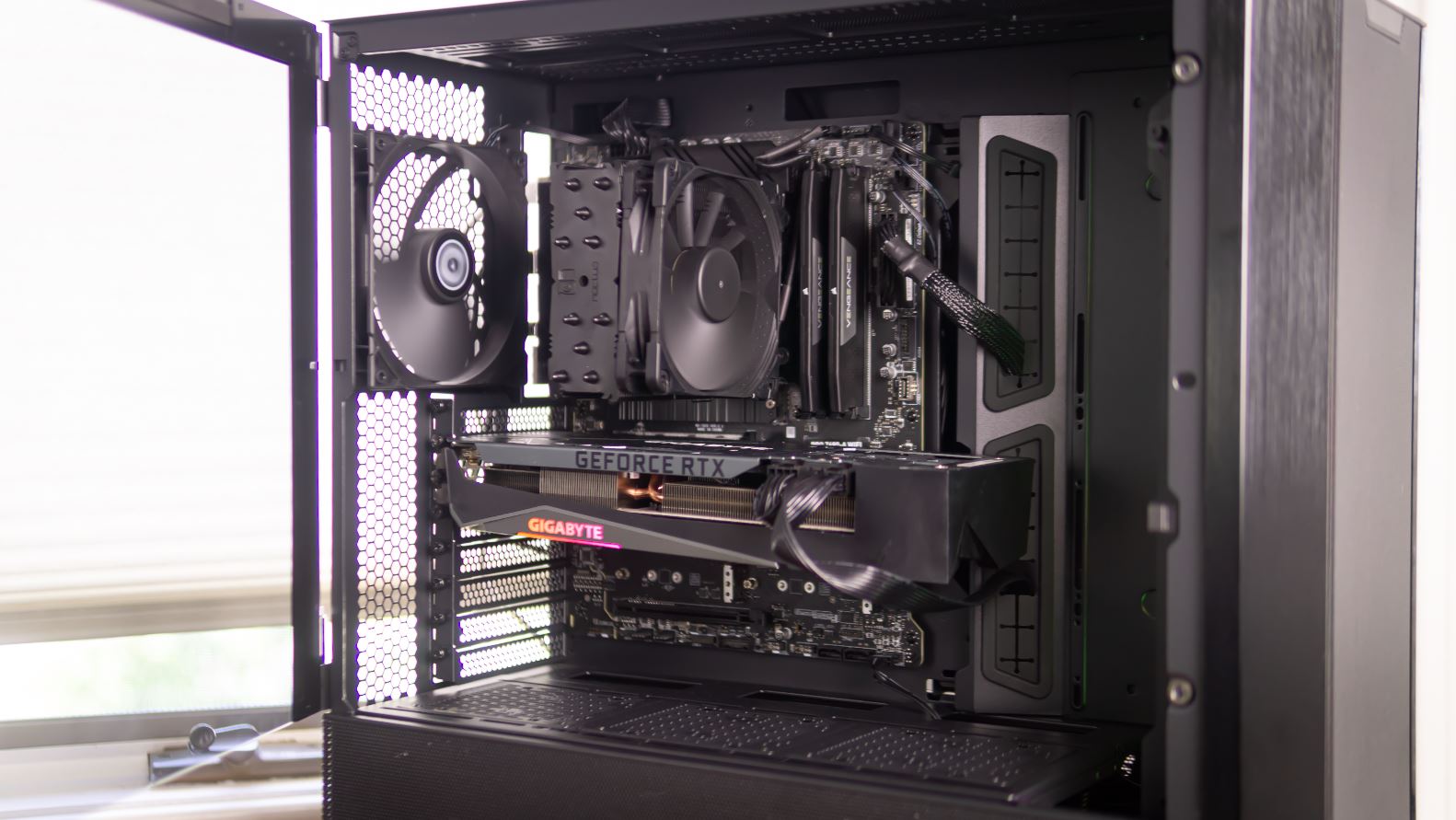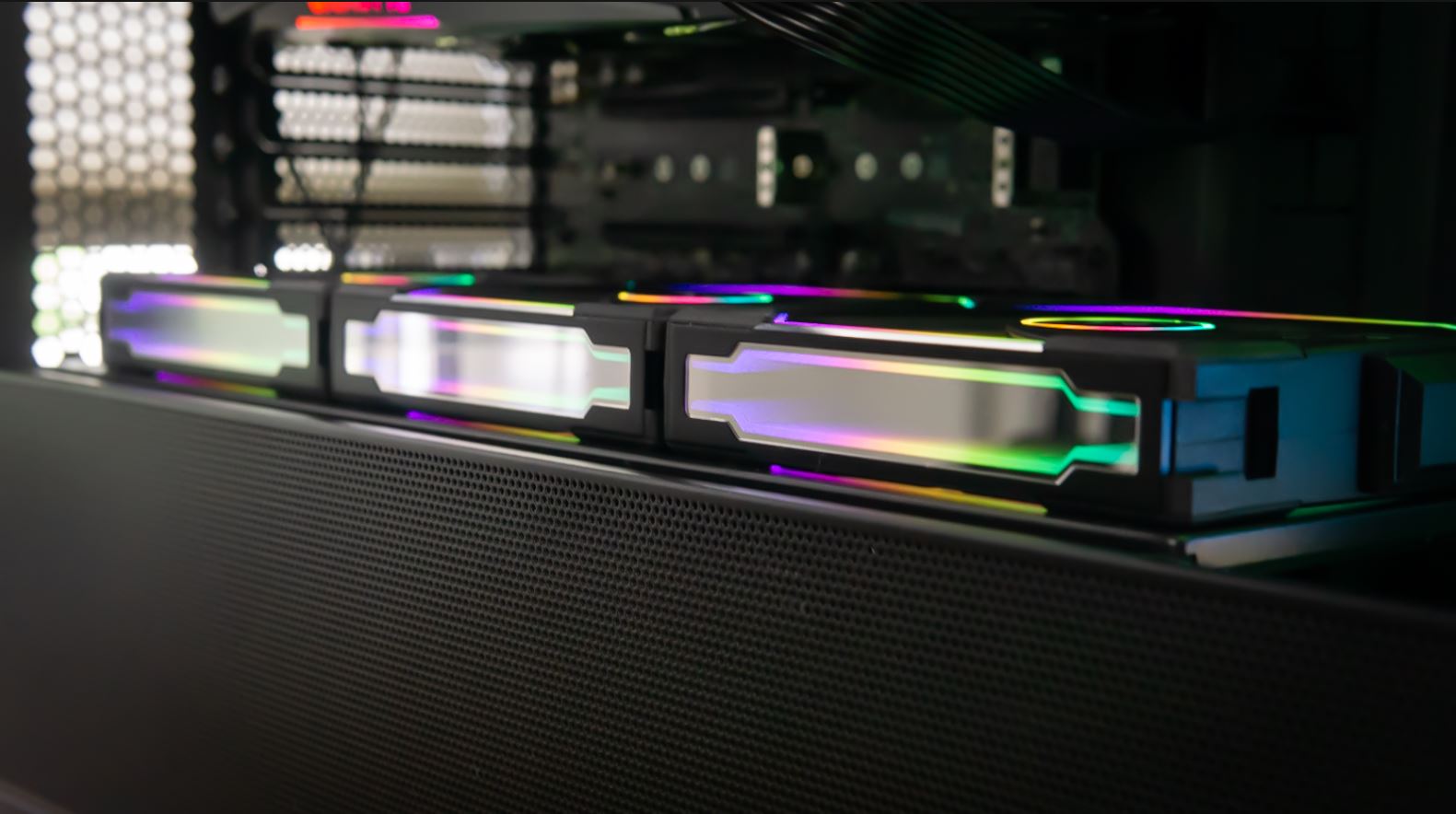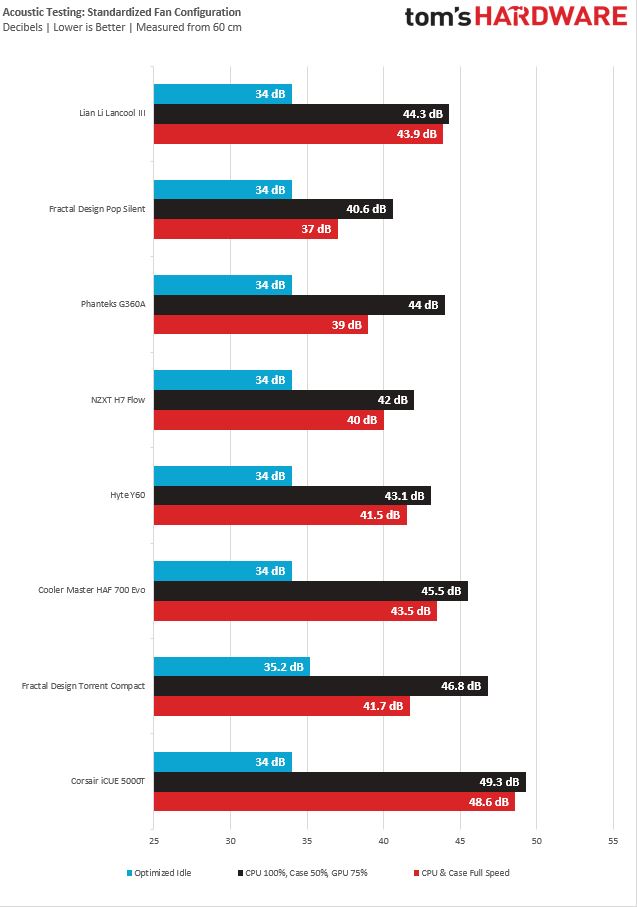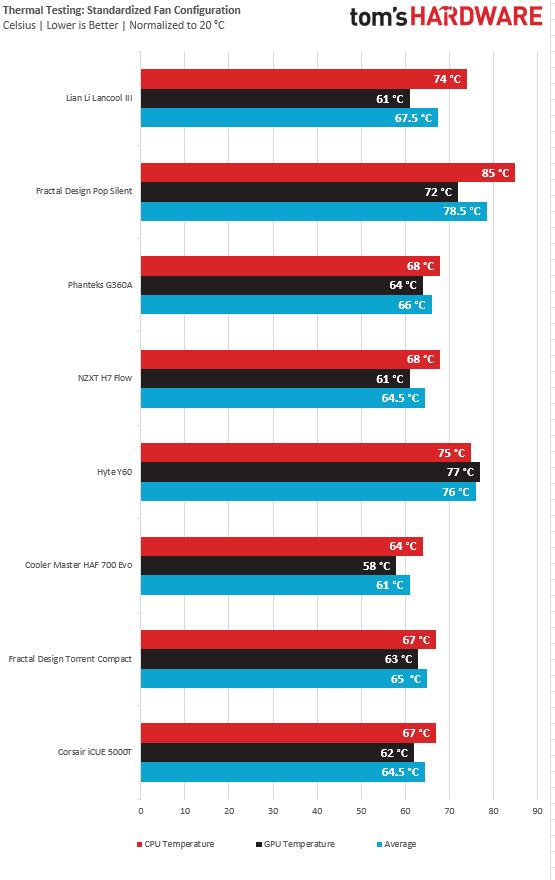Tom's Hardware Verdict
The Lian Li Lancool III is another impressive release by the popular case company, despite its loud fans and CPU thermals that could be better.
Pros
- +
Bridged IO connector cable
- +
Three 140mm aRGB fans, plus non-RGB exhaust fan
- +
Simple but excellent cable management
- +
Fair price
- +
IO can be moved to the top or bottom
- +
Tons of cooling capability
- +
Extremely roomy
Cons
- -
May be too noisy for some
- -
CPU thermals are nothing special
- -
Brushed aluminum pillars attract fingerprints
Why you can trust Tom's Hardware
Over the last year or so, the PC case market has offered up some interesting and impressive cases that combine airflow sufficient airflow (usually via a mesh front panel) with attractive looks to back the performance. Examples that come to mind include Fractal’s Torrent and the surprisingly affordable Phanteks Eclipse G360A. But Lian Li arguably carried this trend to the forefront with cases like the Lancool II Mesh Performance and the morphing O11D EVO, as well as other variants of the hugely successful O11 line, going all the way back to 2018. If you need any evidence of just how popular its cases are, you only need to take a cursory glance at PC builds on Instagram, most of which seem to be housed in one Lian Li case or another.
Now the company is back with the latest installment of its Lancool line, the Lancool III. As with previous iterations, this is a pretty large chassis (nearly 21-inches tall and deep). But the case comes with four 140mm PWM fans and support for the largest hardware due to its modularity. At $159.99 for the black RGB model we tested and $169.99 for the white RGB version (with non-RGB versions available for $10 less), does the Lancool III live up to its legacy and earn a spot on our Best PC Cases list? Let’s dig in and find out.
Specifications of the Lian Li Lancool III
| Type | ATX Mid-Tower |
| Motherboard Support | Mini-ITX, Micro-ATX, ATX,EATX |
| Dimensions (HxWxD) | 20.7 x 9.3 x 20.6-inches |
| Max GPU Length | 16.5-inches |
| CPU Cooler Height | 6.69-inches |
| External Bays | X |
| Internal Bays | 12 x 2.5 or 4x 3.5-inch |
| Expansion Slots | 8 |
| Front I/O | 1x power, reset, RGB color, RGB mode button, 2x USB 3.0, 1x USB Type-C (10 Gbps), 1x audio/microphone jack. |
| Other | Tempered Glass Side Panel |
| Front Fans | 3x 140mm aRGB fans |
| Rear Fans | 1x 140mm fan |
| Top Fans | None |
| Bottom Fans | None |
| Weight | 31 pounds (14.1kg) |
| Warranty | 1 year |
Features of the Lian LI Lancool III
The Lian Li Lancool III is a beefy mid-tower ATX case that’s more down-to-earth than the O11, but packs a similar punch with the level of modularity, creativity and attention to detail.
When the Lancool III first arrived, I tried to open the tempered glass side panels and simply couldn’t. However, the brushed aluminum pillars on the front panel open like the handle of a car door, thus allowing the glass to swing open elegantly. While I love this unique panel release process, the brushed aluminum is a fingerprint magnet, so you’ll want to be careful to grab the handles from the inside rather than the front. Aside from the pillars, the front of the case is covered in mesh with small 1.5mm holes. Now, I don’t go around measuring the diameter of the holes on other mesh-fronted chassis, but Lian Li points out the size here, claiming it strikes a good balance between airflow and stopping dust from getting in the case. (there’s no filter up front but there is on the bottom.)
Rather than having glass that runs all the way down the sides of the case, the Lancool III borrows a page from the also excellent Lian Li Q58 ITX case. The PSU shroud area is flanked by mesh doors that swing out and down. The left door is barren, yet when opened will give you access to the two included hard drive cages. There are two cages here, which means four 3.5 or 2.5-inch drives can hide alongside the PSU. The other mesh flap comes with two pre-installed 2.5-inch SSD sleds, and two more can be found behind the motherboard tray. On top of that, this case can fit three more SSDs on top of the PSU shroud (assuming you aren’t planning on placing fans there). That’s a lot of storage options, though I did have to remove one of the drive cages to make the installation of our PSU and its cables easier. But even with one cage removed, you still have room for two old-school 3.5-inch hard drives.
On most cases these days, the IO is housed up top and you don’t think much about it, even if it’s inconvenient for those who want to put their system on their desk. However, the Lancool III’s IO can be moved from its default top spot to the bottom– right underneath the Lian Li logo. Another nice touch: Connecting the front IO to your motherboard has never been easier, as Lian Li has combined the frustrating header cables into one. That cuts at least a third of the annoying fiddling and frustration of the average PC build by at least a third.
Internal Layout
The Lancool III stands at 20.7 x 9.3 x 20.6 inches (HWD), which is almost as tall as the Corsair iCUE 500T. While this is a large case, the internal cavity doesn’t seem at all wasted. Lian Li wanted to make sure that you get the most out of every inch in this case by making it compatible with gargantuan radiators (up to 420mm up top) and other cooling components.
Get Tom's Hardware's best news and in-depth reviews, straight to your inbox.
Three radiators can be installed in total, and two can be mounted in dual positions to make room for other components. There are six possible pump mounting points on the bottom shroud and in front of the motherboard, removable brackets for mounting radiators outside of the case, and even a fill/drain hole in the bracket up top for custom cooling loops. Oh, and you can install up to ten 120mm fans or nine 140mm fans–four of the latter are included. For those who like to experiment with and/or overload a case with cooling, the Lancool III is a wonderland of options.
I never understood why case companies add glass to the rear side panel, as Lian Li does here, because who wants to see their bird's nest-like cable mess? However, the Lancool III features small metal doors that cover your cables, similar to the bigger CoolerMaster HAF 700 Evo. If you are a cable managing guru, the doors can be removed and show off the profusion of Lancool’s Velcro cable ties. There are three big straps and five small ones, making it fairly easy to keep your cables in line.
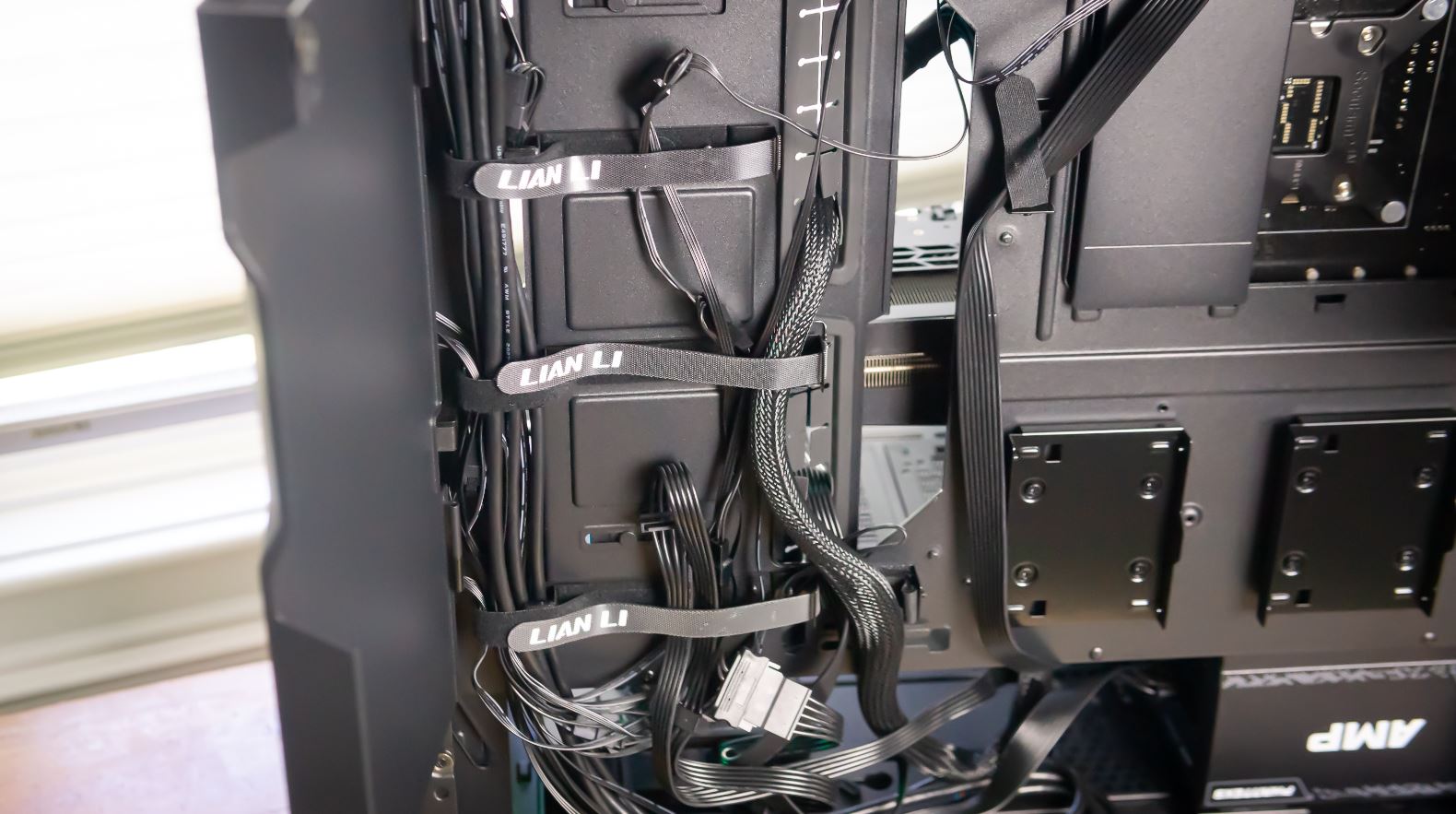
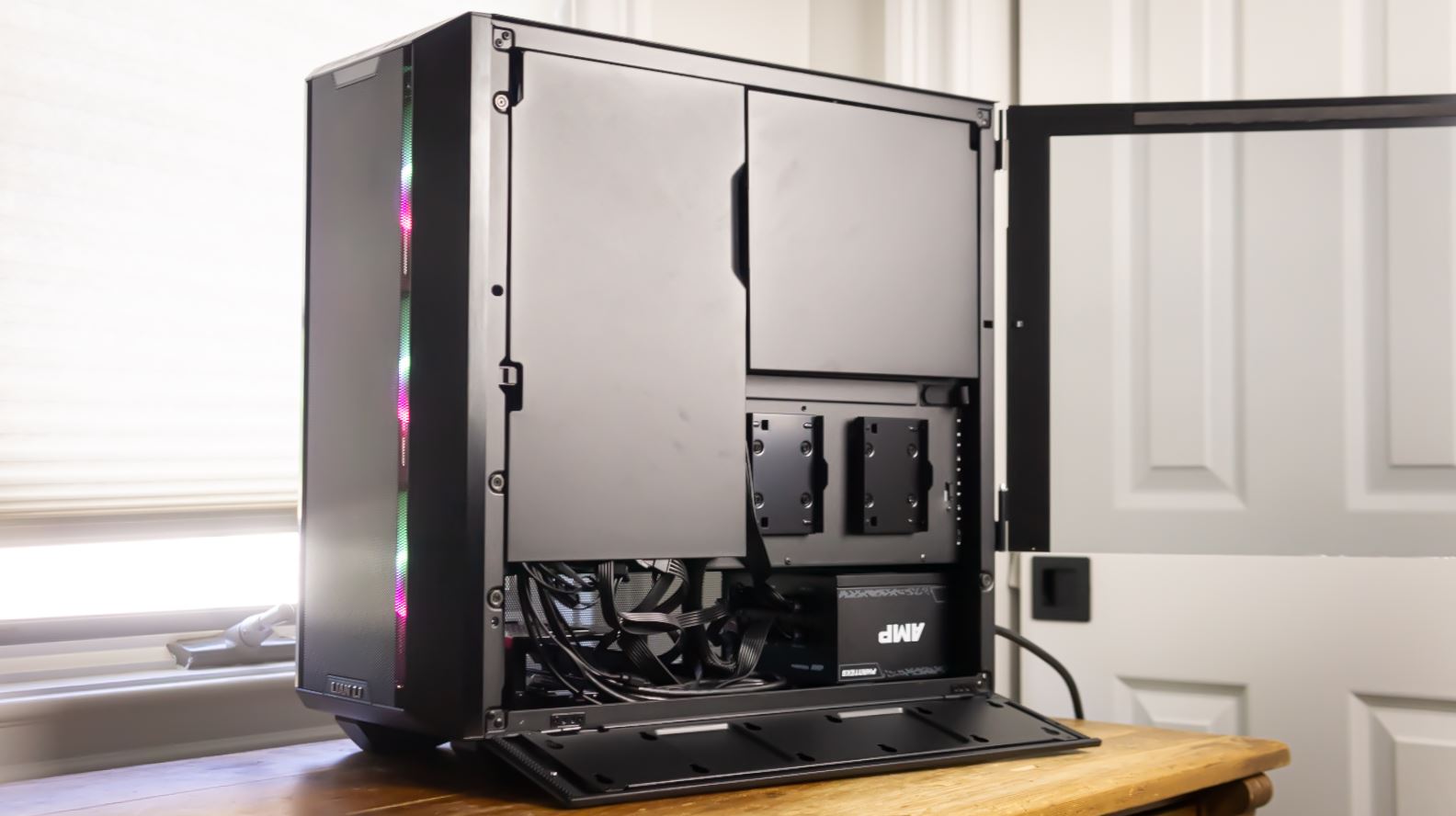
Lian Li Lancool III Cooling
The glass-flanked O11 Dynamic arguably brought Lian Li to its current prominence (after several years focusing on very expensive all-aluminum cases. But the company is no stranger to the importance of airflow. While the O11 is great for custom water loops, this chassis has the potential to be the same. At the top of the Lancool III, there’s a fill port on the radiator bracket that supports up to 420mm. But again, it’s not just up top where the Lancool III’s cooling capability lies, it’s everywhere else. I mentioned that three 2.5-inch SSDs can be installed above the PSU shroud, but that can be substituted for more cooling, should you choose. If you remove the SSD tray, you can install a radiator up to 360mm here as well. And while it sounds odd to have a radiator at the bottom, the mesh sides of the shroud do let more fresh air in than you might expect.
The front of the Lancool III has a lot of room (360mm of radiator support), but Lian Li included 3x 140 PWM aRGB fans. While I can’t complain, I found it funny that the company included a non-RGB 140mm spinner in the rear. It is, at least PWM. The included fans aren’t cheap, as the aRGB spinners in the front get up to 1650 RPM, while the one in the rear can hit 1800. As we will see shortly in testing, though, the fans lean more toward aggressive than silent.
If you choose the more traditional air cooling, the Lancool III can support tower coolers up to 185mm (7.3 inches). Supported GPU length is up to 420mm (16.5 inches), so even the most oversized graphics cards should fit without issues.
Oh, and if you find the traditional standard GPU installation a bit boring, the company will also offer a vertical GPU mounting kit, similar to the O11D Evo, with your choice of PCIe 3.0 or 4.0 riser cables. The kit will even let you mount the card in two places above the PSU shroud so you can leave clearance for fans or let it sit lower down if you don’t have spinners there. The company hasn’t yet told us how much the riser kit would cost.
Testing Hardware
We’ve updated our testing hardware to use Intel’s 12 Gen “Alder Lake” platform, which has shaken up the desktop landscape (and taken prominent spots on our best CPUs for gaming list). We’re now using a Core i7-12700KF, which is being cooled by a Noctua U12s air cooler. Our graphics card is a Gigabyte RTX 3070 Ti Gaming OC.
On top of that, going forward, we’ve switched our motherboard out for the MSI Pro Z690-A WIFI. The Aorus Z690 Elite we were using for previous reviews died during the initial build of this review, so we had to swap it out.
Acoustic Results for the Lian Li Lancool III
Our acoustic test consists of three scenarios: We run the CPU at full load, the CPU and GPU at full load, and an optimized mode. The CPU full load test runs the CPU and case fans at their maximum speed. For the CPU and GPU full load acoustic test, we also stress the Gigabyte RTX 3070 Ti Gaming OC and set the fans at 75% speed, because in gaming the fans never run at 100 percent and are far too loud when they do.
For the optimized mode, we run the GPU fan speed at 30 % and run the CPU and included case fans at the lowest speed that they will spin.
The results we got from the Lancool III were, well, strange. There was barely any difference in noise between our two tests. Nonetheless, the results weren’t too bad if you keep in mind that this case comes with four 140mm fans that sport relatively high RPMs. It’s also worth mentioning that this chassis has more porous panels than most mesh-covered cases, as the flaps on the PSU shroud are also mesh. The acoustic results were a bit louder than I would’ve liked, but that’s typically the tradeoff with airflow-first cases–unless you’re getting the NZXT H7 Flow.
Thermal Results for the Lian Li Lancool III
For the thermal tests, all case and CPU fan speeds are set to 100%. The Core i7-12700K is set at a 4.7GHz clock at 1.3v on all performance cores to ensure consistent power consumption across test scenarios. Letting the GPU run at 75% fan speed enables it to maintain its power target while sticking to one set reasonable fan speed, so that the temperature is the only variable.
I’d be lying if I said that I was slightly disappointed by the thermal results from the Lancool III during our CPU stress test. During the CPU test, I never felt concerned for our little Intel Core i7-12700K, but I was surprised to see a case with four 140mm fans not keeping the CPU temps lower. The Lancool III came back to earth during our GPU test and tied the H7 Flow in thermals there. Perhaps the improvement in temps on the GPU front are correlated to the mesh flaps on the PSU shroud.
Bottom Line
There’s a reason why Lian Li has a reputation for being one of the best in the business. And the Lancool III is another exemplary representation of what the company can do. The case isn’t perfect; the brushed aluminum front flaps pick up fingerprints too easily for a door release. I’m also well aware that we run stress tests that are more demanding than most users will regularly experience. But even with fans as loud as these, the case wasn’t able to cool our CPU as well as I expected.
With those issues out of the way, for $160, I can somewhat forgive Lian Li, because the level of detail and creativity in this case is far beyond anything that I’ve seen in recent months. The Lian Li Lancool III RGB packs in a lot for its price. If you want RGB and airflow for a reasonable price tag, this is certainly something worth looking at. And if you prefer to be RGB-free, the base models cost $10 less and come with the same number of fans.

Myles Goldman is a freelance writer for Tom's Hardware US. He reviews keyboards and cases.
